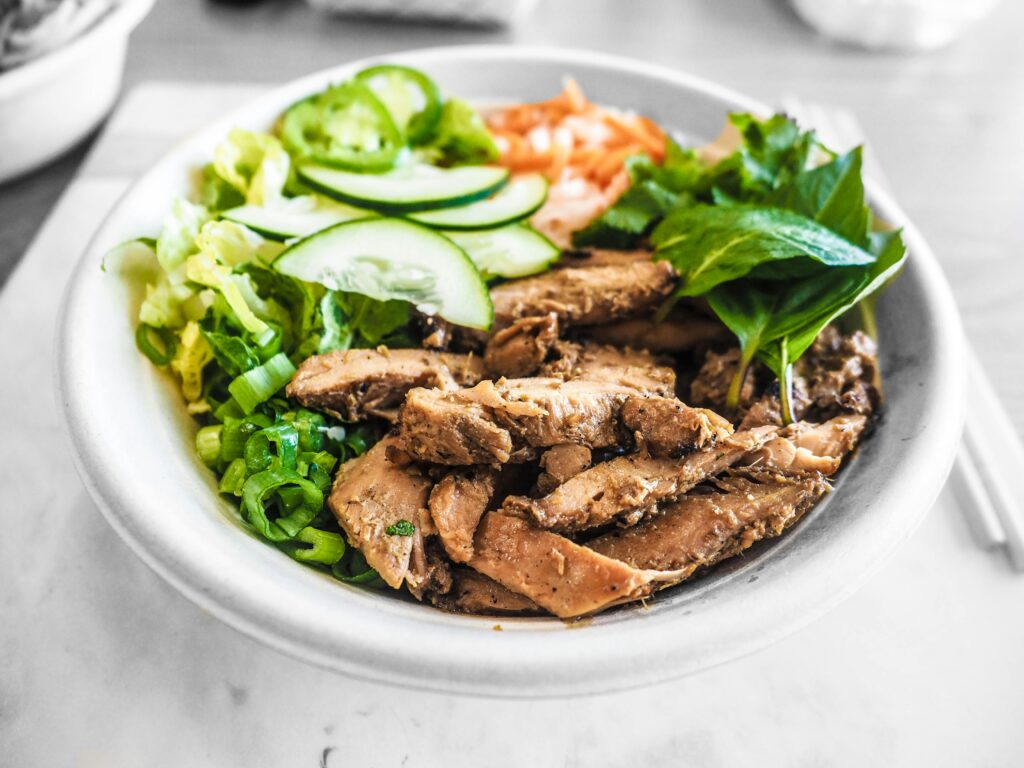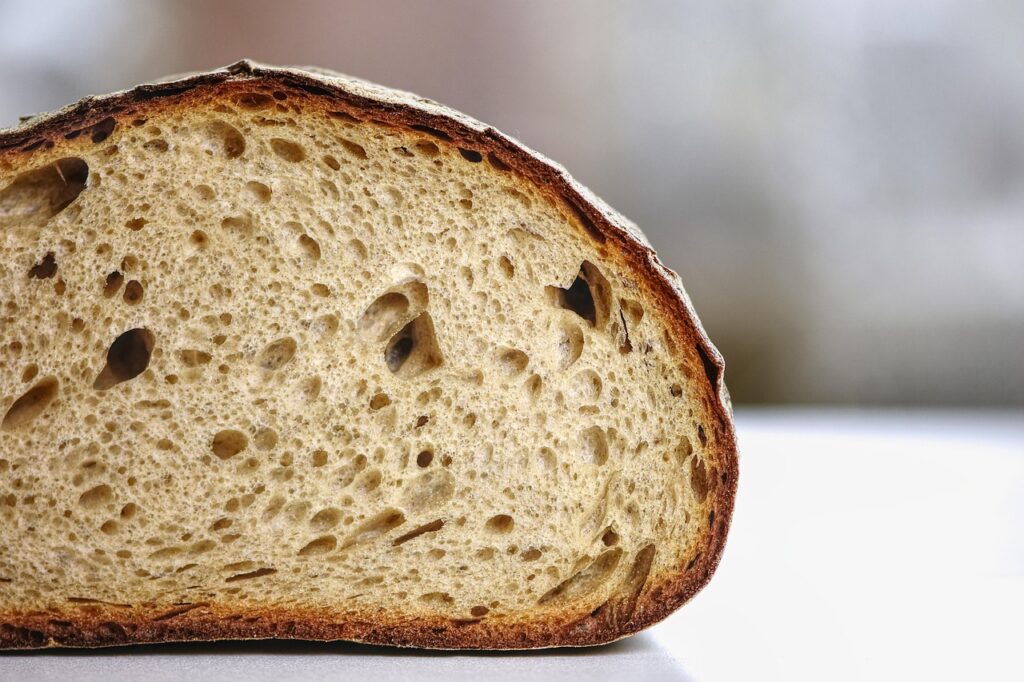Perfectly Cooked Food: The Science Behind Nutrition, Flavor, and Digestibility
Perfectly cooked food is more than a matter of taste—it’s a scientific balance between heat, time, and transformation. Every golden crust, tender crumb, and crisp vegetable is the result of chemical precision that determines not only flavor but also nutrition and digestibility. This blog unpacks the science behind flawless cooking, from the Maillard reaction that deepens flavor to the precise temperatures that preserve vitamins and natural enzymes. You’ll discover how different techniques—like rapid boiling, controlled steaming, and low-heat baking—enhance both texture and nutritional value.
Beyond recipes, this guide reveals why certain methods yield superior results, empowering you to create meals that are delicious, wholesome, and health-optimized. Whether you’re baking bread, toasting grains, or mastering vegetables, understanding the science of heat control will help you elevate every dish into truly nourishing, perfectly cooked food. For a deeper look at how food underpins wellness, see our piece on nourishing nutrition.
The Science of Perfectly Cooked Food
Cooking is far more than a culinary art; it’s a series of precise chemical processes. The key to flawless results is understanding reactions like the Maillard Reaction, starch gelatinization, and heat transfer. For instance, the Maillard Reaction is responsible for the deep, savory flavors and golden-brown crust on your bread and seared meats. It occurs when proteins and sugars in food are heated above 285°F (140°C). By controlling heat and moisture, you can maximize this reaction for exceptional flavor.
This scientific approach is justified, especially for plant-based foods. As noted in hygienic texts, uncooked grains are “but slightly nutritious, a large portion of their starch remaining unconverted.” However, the application of heat converts this starch into dextrin, rendering it “more appropriable by the system.” Therefore, mastering the science is essential for transforming raw ingredients into truly nourishing, perfectly cooked food.
1. How to Bake Wholesome Bread Perfectly
Baking wholesome bread is an art, but it’s also a science of yeast, temperature, and steam.
- Choose the Right Flour: Perfectly cooked food starts with the best ingredients. Bread should, of course, always be made from whole-wheat flour—never white flour. Whole wheat retains the bran and germ, offering more fiber and nutrients.
- The Right Vessel: Set your dough to rise in a wooden tray or a thick earthen crock, never a cold metal tin. Cold drafts can chill the dough and inhibit a consistent rise.
- Baking with Covered Pans (The Steam Secret): For the ultimate loaf, bake your bread in a pan with a closely fitting cover, like a Dutch oven. This technique confines escaping vapors, prevents excessive evaporation, and creates a steamy environment. This steam delays crust formation, allowing the bread to expand fully (oven spring) and results in a much sweeter, more flavorful crumb. This method is a hallmark of hygienic cookery, designed to maximize nutrition and taste.
- Temperature is Key: The best temperature for baking bread is typically between 350-425°F. You must bake the bread thoroughly until the crust is nicely browned but not scorched. The internal temperature should reach 200-210°F. As emphasized in traditional practices, the “crusts [should be] thoroughly baked brown.”
2. Master the Perfect Flaky Pie Crust
The secret to a flaky, delicious pie crust is all about temperature control and technique.
- Keep Everything Cold: The foundation of a perfectly cooked food like pie crust is cold fat. Mix your dough lightly and quickly, gathering the mass together without kneading. Have all your materials, especially the butter, as cold as possible. Chilling the dough ensures the butter remains solid, creating steam pockets during baking that result in a flaky, airy texture.
- Use Brisk Heat & Pre-Bake: Always have the oven preheated to a brisk 425°F before you start. Roll your crust thin. To prevent a soggy bottom—a common flaw—it’s advised to “see that the bottom crust of a pie is browned before adding the fruit and the top crust.” A hot oven sets the crust quickly. You can moderate the heat to 350°F after 15 minutes as the filling cooks.
3. Cook Vegetables to Preserve Nutrients & Texture
Cooking vegetables properly is a skill that preserves their flavor, color, and vital nutrients. A 2023 Food Chemistry study shows boiling veggies rapidly preserves 40% more nutrients than slower cooking methods. This aligns perfectly with the classic hygienic principle: “Vegetables—nearly all of them—should be dropped into boiling, not cold, water.”
- The Boiling Water Method: The purpose of this is to coagulate and condense the outer layer of the vegetable, sealing in its juices and valuable food properties to prevent them from leaching into the water. This is true for greens, beans, and carrots.
- Timely Removal: As soon as they are tender-crisp, lift them from the water. Overcooking by even a minute drastically alters flavor and texture. For example, thinly sliced cabbage can cook in just a few minutes.
- Steam Instead: For the most nutrient-dense perfectly cooked food, use as little water as possible. Steaming vegetables in a minimal amount of water ensures there is little to no nutrient-rich liquid to pour away.

4. Select and Prepare Fruits Correctly
How you handle fruit significantly impacts the final dish.
- Choose Green Over Over-Ripe: If fruits are cooked at all, green fruits should be selected in preference to over-ripe fruits. Firmer fruits hold their shape better during cooking.
- Start in Cold Water: The cooking method depends on ripeness. “Unripe fruits should be started in cold water, and cooked slowly” to gently tenderize them without causing the skin to burst.
- Sweeten Naturally with Dates: Avoid refined sugar, which “renders them sweet-tasting, but liable to fermentation.” For natural sweetness, use pureed dates or figs.
- Clean Dried Fruits Thoroughly: “See that all currants, raisins and dried fruits are thoroughly clean before cooking them.” In summer, they may contain insects; wash them well to avoid cooking pests into your food.
5. The Art of Toasting Bread Perfectly
The trick to perfectly cooked food is often in the details, and toasting bread is no exception.
- Use Stale Bread: For the best toast, cut stale bread into even slices about half an inch thick. Fresh bread has too much moisture, leading to uneven browning and a soft, steamy interior.
- Aim for Even Heat: Toast the slice over a consistent heat source (a toaster oven works well) and turn it over before it warps. When it is done, the entire surface should be a crisp, even chestnut-brown, a perfect example of the Maillard reaction in action.

6. Minimize (or Eliminate) Salt and Soda
True perfectly cooked food celebrates the natural flavor of ingredients.
- No Salt Necessary: Salt is never necessary. One can soon get accustomed to food without a particle of salt or other dressing. Once your palate adjusts, you’ll appreciate the inherent sweetness of vegetables and the nutty flavor of whole grains.
- Use Soda Sparingly: “If soda is put into bread, etc., use it sparingly.” Soda can destroy valuable vitamins and alter flavor. Well-fermented natural yeast doughs rarely need it.
7. Understand the “Why” Behind Cooking Methods
The final technique is knowledge. Understanding that cooking converts starch into digestible dextrin or that rapid boiling seals in nutrients empowers you to adapt and innovate. This knowledge connects cooking technique with the broader philosophy of food as a tool for health.
From Principles to Plate: Creating Nutrient-Dense Meals
Understanding the science of cooking empowers you to apply it to everyday dishes, transforming them into truly nutrient-dense meals. Let’s explore how classic recipes exemplify the principles of how to cook food for maximum nutrition, focusing on technique to enhance both flavor and digestibility.
Mastering Grains and Legumes
The journey to how to cook food for maximum nutrition often starts with staples. For a perfectly creamy and digestible oatmeal, use a one-to-five ratio of cereal to water, cooking it slowly until it reaches a soft, mushy consistency. This thorough cooking ensures the starches are fully gelatinized, making it a warm and energizing nutrient-dense meal to start your day.
The same mindful approach applies to legumes. To preserve their valuable alkaline minerals, always soak dried beans or peas overnight and then cook them in the same soaking water. This simple step is a cornerstone of preparing nutrient-dense meals, ensuring you get all the intended benefits from these powerful plant-based proteins.
The Art of Gentle Protein Cookery
How you cook proteins like eggs and chicken dramatically impacts their digestibility. For the most tender eggs, avoid aggressive boiling. Instead, steam them by placing them in boiling water, removing the pot from the heat, and letting them sit for 8-10 minutes. This gentle method preserves the delicate texture of the albumin, making it easy to digest.
Similarly, a perfectly cooked chicken, whether gently stewed or roasted in a covered pan with a small amount of water, yields tender, moist meat that is both flavorful and easy on the stomach. These methods showcase how to cook food for maximum nutrition by using gentle heat to protect the integrity of the protein.
Vegetables: Capturing Their Essence
Apply the principle of cooking with minimal water to vegetables like spinach and other greens. Simply place them in a hot, covered pot and stir until they wilt. They will cook gently in their own exuded juices, locking in flavor and nutrients. The resulting rich, concentrated liquid should be served with the greens, turning a simple side into a powerhouse nutrient-dense meal.
Wholesome Desserts and Dressings
Even desserts and dressings can follow these principles. A simple French dressing made from olive oil, fresh lemon juice, and a hint of garlic allows the natural flavors of a salad to shine without overpowering, processed ingredients. For a naturally sweetened treat, a date pudding simmered slowly in milk until thick relies on the fruit’s intrinsic sweetness, demonstrating that you can create satisfying dishes while focusing on how to cook food for maximum nutrition.
FAQ: Your Questions on Perfectly Cooked Food, Answered
I’ve always drained and rinsed my beans after soaking. Why is cooking them in the same water better?
This is a common practice, but it washes away valuable water-soluble vitamins and alkaline minerals. Cooking beans in their soaking water is a key technique for how to cook food for maximum nutrition. It ensures you retain all the inherent benefits of the legume, turning a simple dish into a truly nutrient-dense meal that supports your body’s mineral balance.
The blog says to avoid overcooking, but also to cook oatmeal into a “mush.” Isn’t that overcooking?
This is an excellent question that highlights the difference between overcooking vegetables and properly preparing grains. Overcooking vegetables destroys their structure, texture, and water-soluble vitamins. For grains like oatmeal, however, slow cooking into a soft mush is necessary to fully gelatinize the starches, which makes them digestible and their energy available to your body. This is a fundamental principle of how to cook food for maximum nutrition, transforming a hard grain into an easily assimilated, nutrient-dense meal.
How does steaming an egg versus boiling it make it more digestible?
Boiling an egg in rapidly rolling water subjects the delicate proteins to harsh, direct heat, which can make them tough and rubbery, and harder for some people to digest. Steaming an egg (by placing it in boiling water and then taking it off the heat) uses gentler, residual heat to cook the protein more softly. This results in a more tender texture that is less likely to irritate a sensitive stomach, showcasing how mastering gentle cooking methods contributes to nutrient-dense meals.
